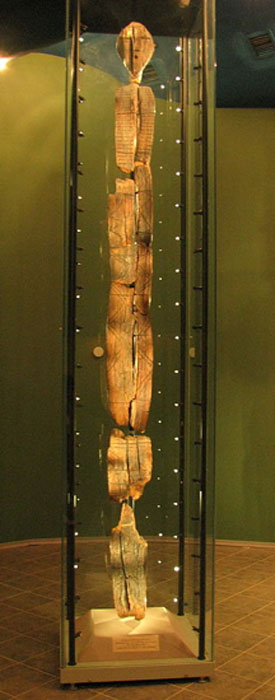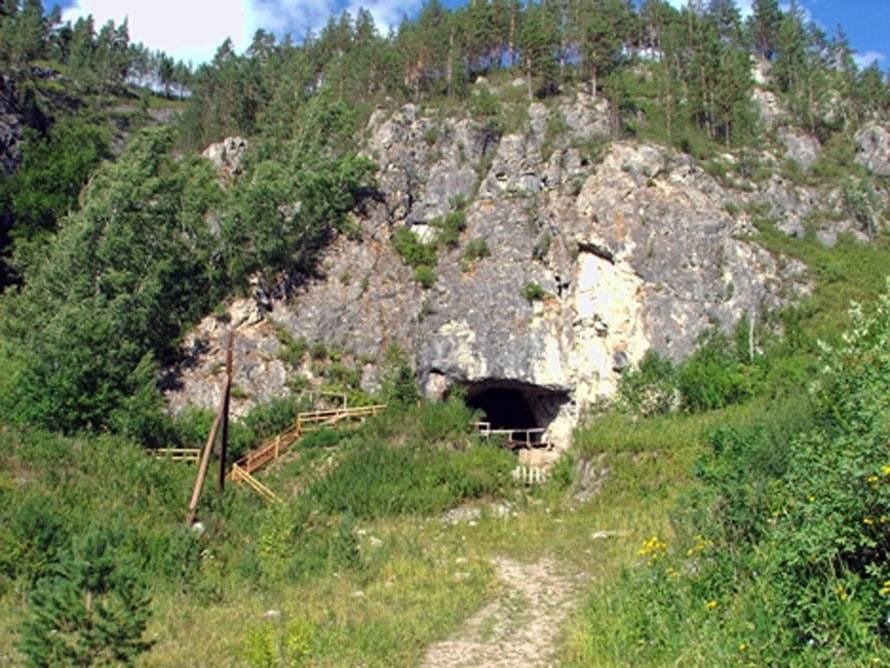
Russia’s Wealth of Archaeological Wonders
The treasures and ancient mysteries of Russia provide evidence of vital stages in not only human evolution, but the very origins of life on planet earth. Although archaeology was practiced in the Russian Empire in the 1850s, it formally became 'Soviet archaeology’ in the early 20th century with the journal Sovetskaya Arkheologiia having been published since 1957.

The Shigir wooden sculpture dates to 11,000 years ago ( CC BY-SA 3.0)
The Shigir Idol
One of Russia’s greatest ancient treasures is called the Shigir Idol; carved in the Mesolithic period around 11,000 years ago, it is the world’s oldest wooden sculpture. Discovered in 1890 in the mid Ural region, about 100 kilometers (62.13 miles) from Yekaterinburg, it was pulled from a four meter (13.12 feet) deep peat bog and this unique Siberian larch idol is estimated to have stood over 17 feet (5 meters) high. It is today displayed at the Sverdlovsk Regional Lore Museum in Yekaterinburg and while one pictures this dominant artifact in situ, overlooking a hunter’s camp, one is reminded of author Rob Waugh’s 2015 Yahoo News article in which he reminds that this: “Mysterious Russian statue is twice as old as the pyramids in Egypt”.

On this map; the formative Sintashta-Petrovka culture is shown in red; the maximum extent of the Andronovo culture is in orange; the location of the earliest spoke-wheeled chariot finds is indicated in magenta. Afanasevo culture and Srubna cultures overlap and are shown in olive green. (Dbachmann / CC BY-SA 3.0)
Country of Towns
Between the 1960s and 1980s Soviet archaeologists exploring in the Southern Urals discovered a range of ancient settlements which are now known as the ‘Country of Towns’. The once inhabited area covers approximately 350 square kilometers (217 square miles) and has over 20 scattered settlements in what archaeologists call ‘advanced design’ featuring storm drains, dams and canals. How the buildings functioned is relatively well understood but archaeologists were somewhat shocked in learning that they were built by the Sintashta culture and the youngest town is 3,700 years old.
Sintashta culture settlements reveal what scientists have called ‘intense evidence’ of copper mining and bronze metallurgy, which according to the paper, Late Prehistoric Mining, Metallurgy, and Social Organization in North Central Eurasia, is, “unusual for a steppe culture.” Another way in which these settlements stand out from all other contemporary towns elsewhere the world is that: “the earliest known chariots ever discovered have been found in Sintashta burials.” What is more, they are considered as the originators of chariot technology: “which spread throughout the Old World and played an important role in ancient warfare.”

A bone needle dated to 50,000 years ago was discovered at the Altai Denisovan cave in 2016 which is the oldest needle ever discovered. (Демин Алексей Барнаул / CC BY-SA 4.0)




